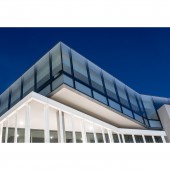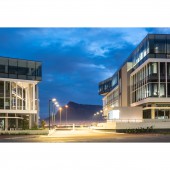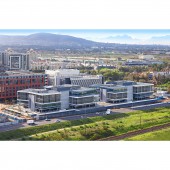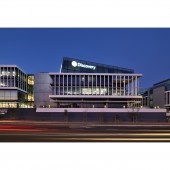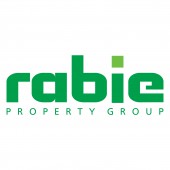Sable Park Commercial Development by dhk Architects |
Home > Winners > #71925 |
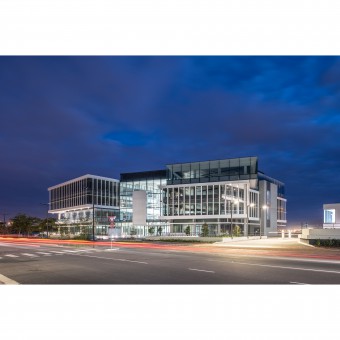 |
|
||||
| DESIGN DETAILS | |||||
| DESIGN NAME: Sable Park PRIMARY FUNCTION: Commercial Development INSPIRATION: The buildings' composition was inspired by shuffling forms that operate independently and adapt to their immediate surroundings. On an abstract level, the spaces are duplicated, and the volumes are inverted. This application was the singular method to the complexity of the resultant macro-articulation which forms a setting for a series of tableaux with an iconic mountain backdrop. In effect, this complex was set out in scenes that take inspiration from aspects of cinematography and film. UNIQUE PROPERTIES / PROJECT DESCRIPTION: Sable Park comprises two four-storey buildings with two levels of underground parking and unobstructed views of Table Mountain and the Atlantic Ocean. The development was designed to appear as a single large complex and as four small independent volumes. The four volumes are further broken down into thirds with each third shifting and jumping on the horizontal and vertical plain to achieve maximum views and optimal orientation. This creates distinct floating boxes that veer off and cantilever beyond one another. OPERATION / FLOW / INTERACTION: The pair of twin blocks are orientated inwards to Bridgeways Road where both entrances are located. Each of the buildings is split into two wings separated by a large quadruple volume. These two spaces are connected by a series of bridges spanning across the atrium at the edge of the main core - forming the proverbial heart of the building, circulating people into various chambers. There are a series of terraces on all four sides of both blocks that were designed as winter and summer gardens. PROJECT DURATION AND LOCATION: The commercial development comprises two buildings, one of 8 000 sqm and another of 8 300 sqm, and is located in mixed-use Bridgeways Precinct, Century City (Cape Town, South Africa). The project was completed in May 2018. FITS BEST INTO CATEGORY: Architecture, Building and Structure Design |
PRODUCTION / REALIZATION TECHNOLOGY: The facade is a result of the north and south blocks being inverted creating a set of four similar yet unique blocks. The atrium is contained by full height double glazed curtain walls on both the entrance and rear faces of each block. These link the alternated facade typologies of the office floorplates. The result is one wing of each building is clad with a single level of curtain wall, positioned below two levels of deep-cilled shopfront which is located behind the aluminium brise-soleil. SPECIFICATIONS / TECHNICAL PROPERTIES: The curtain wall is divided into a two-metre-wide module, while the shopfront is a smaller 1200mm module. The brise-soleil is modulated to match the shopfront with 200-mm-wide extrusions offering a 16-20% cover to the area of glazing. It is face fixed onto the protruding slab edges of the shopfront facades and span over the double level of the shopfront zones. Both the flush-glazed, curtain wall facade and the shopfront facade incorporate spandrel panels, up to desk top height (750mm), below the vision sectors of the respective panels. TAGS: Architecture, commercial, office, design, building RESEARCH ABSTRACT: To create a lower environmental footprint without compromising comfort, various approaches have been adopted. The double-glazed external building envelope was designed to allow increased levels of daylight to penetrate the floorplate while at the same time provide remarkable external views towards Table Mountain. All the shopfronts in the building are set back 700mm and are protected by an outer brise soleil to allow for passive solar control. Further to this, a layer of internal blinds on all windows contribute to glare reduction. The facade is, therefore, able to contribute to the enhancement of the occupant’s comfort and productivity. CHALLENGE: To achieve the "shadow gap" between the boxes to make them appear to hover above one another, a complex double slab component was introduced. The gap is achieved by a perimeter concrete downstand beam projecting into the ceiling void below, and extending outwards to form a protruding flange, or architectural slab, to echo the plan of the floor slab below. The "shadow gap" occurs at every instance where the two distinct boxes come into contact. ADDED DATE: 2018-10-12 08:20:23 TEAM MEMBERS (16) : dhk Architects, Rabie Property Group, Cogent Development Management , Aurecon , BVI Engineering , QDP Light and Electrical Design (Pty) Ltd , LH Consulting Engineers , Ecosense Environmental Consultants, Planning Partners , RLB/Pentad Quantity Surveyors , WBHO, Solution Station Consulting Engineering , PJ Carew Consulting, David Hellig & Abrahamse, dhk thinkspace and QDP Lighting & Electrical Design (Pty) Ltd IMAGE CREDITS: Dave Southwood / Wieland Gleich / WBHO |
||||
| Visit the following page to learn more: http://www.dhk.co.za/ | |||||
| AWARD DETAILS | |
 |
Sable Park Commercial Development by Dhk Architects is Winner in Architecture, Building and Structure Design Category, 2018 - 2019.· Read the interview with designer dhk Architects for design Sable Park here.· Press Members: Login or Register to request an exclusive interview with dhk Architects. · Click here to register inorder to view the profile and other works by dhk Architects. |
| SOCIAL |
| + Add to Likes / Favorites | Send to My Email | Comment | Testimonials | View Press-Release | Press Kit |
Did you like Dhk Architects' Architecture Design?
You will most likely enjoy other award winning architecture design as well.
Click here to view more Award Winning Architecture Design.


